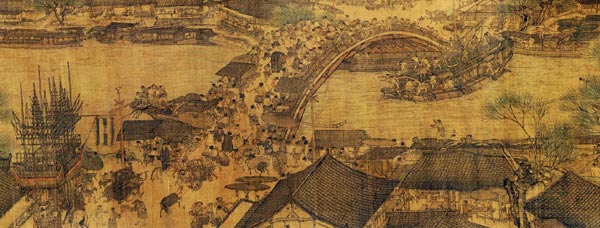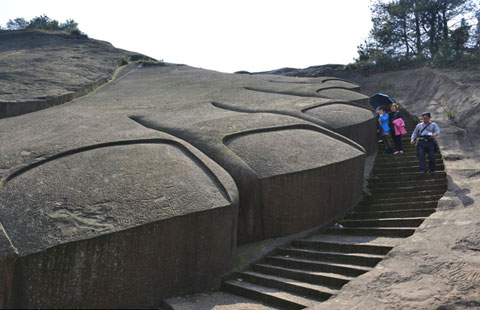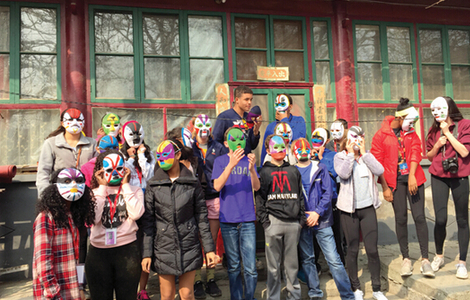Picture tells a thousand stories
Updated: 2015-04-01 07:34
By Xing Yi(China Daily)
|
||||||||
 |
|
Part of the painting, Along the River During the Qingming Festival, reveals the 12th-century urban life in Bianliang, an ancient Chinese city. Photo provided to China Daily |
For many Chinese, Qingming Festival, also known as Tomb Sweeping Day, which falls on April 5 this year, is associated with a famous painting created by Zhang Zeduan during the Northern Song Dynasty (960-1127).
The 5.28-meter-wide and 0.24-meter-high Along the River During the Qingming Festival vividly depicts life along the banks of the Bianhe River, which flows through Bianliang, the capital city of the dynasty and today's Kaifeng city in Henan province.
A recently published historical thriller, Qingming Shanghe Tu Mima (The Code of the Painting Along the River During the Qingming Festival), tells the story of a major conspiracy depicted in the seemingly peaceful scene, which leads to the fall of the Songs.
The scroll painting features more than 800 people doing various activities. Farmers are sowing seeds in the fields, people are walking in the streets, sweeping graves and eating. Children are flying kites, merchants are selling goods, workers are driving carts, officials are riding horses and women are walking with baskets in hand.
In Qingming Shanghe Tu Mima, Chengdu-based writer Ye Wenbiao gives each figure a name and a role, bringing them to life. He weaves the characters into his "big history" fiction, in which the author sets during a critical period, creating a story based on historical records.
"There is always some mystery that historians cannot explain. So I use my logic and imagination to fill in the gaps," Ye, 43, says.

 6 cultural differences between China and the US
6 cultural differences between China and the US
 Mother illustrates her pregnancy
Mother illustrates her pregnancy
 In memory of movie star Leslie Cheung
In memory of movie star Leslie Cheung
 Top 10 best employers in China in 2015
Top 10 best employers in China in 2015
 World's largest reclining Buddha statue in Jiangxi
World's largest reclining Buddha statue in Jiangxi
 First round-world solar flight stops in China
First round-world solar flight stops in China
 Elderly care explored for investors, needy
Elderly care explored for investors, needy
 Sasha Obama took trip to China
Sasha Obama took trip to China
Most Viewed
Editor's Picks

|

|

|

|

|

|
Today's Top News
US 'miscalculated' on AIIB: Albright
PMI indicates factories back to expansion
Chinese woman charged with fraud remains in US jail
46 countries apply to AIIB
Tales of a nomad
US 'willing to work with AIIB': Lew
Silk Road connects China to the world: BOC chairman
Washington 'willing to work with AIIB'
US Weekly

|

|






